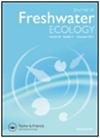埃塞俄比亚塔纳湖水葫芦侵染和非侵染地点Labeobarbus spp(鲤科)渔业的时序ARIMA模型
IF 1.4
4区 环境科学与生态学
Q3 ECOLOGY
引用次数: 0
摘要
埃塞俄比亚最大的淡水湖塔纳湖(lake Tana)是21种特有鱼类的家园,其中大多数是鲤属(Labeobarbus)。该湖正在经历许多生态变化,包括水葫芦(Eichhornia crassipes)的入侵。索姆斯(WH)。本研究的目的是在考虑水葫芦入侵增加的情况下,预测塔纳湖未来的鱼类产量。这是通过分析12年来与渔业无关的Labeobarbus时间序列数据集完成的,这些数据集收集于水葫芦侵染和未侵染的地点。使用增广Dickey-Fuller (ADF)单位根检验对数据的平稳性进行了调查。采用一阶数据差分法将非平稳数据求解为平稳数据。在相同的标准化刺网和相同的地点,在水葫芦滋生的地点,旱季的CPUE从2010年的3502克(3.5公斤/天)下降到2020年的360克(0.36公斤),表明每日捕获量减少了90%。每单位努力渔获量(CPUE)在所有季节均明显下降,且下降速度比非侵染地点快。Box Jenkin的自回归综合移动平均模型(ARIMA)模型预测,到2032年,Labeobarbus的CPUE将比目前的捕获量下降三倍。在此基础上,利用赤池信息准则(Akaike’s)的最低值,确定了各季节、各地区最适合的模型为ARIMA(0,1,0)。随着水葫芦危害的扩大,鱼类产量下降,需要采取综合的水葫芦减少策略,封闭区域和封闭产卵季节,以及调节网目大小,以实现资源的可持续保护和利用。由于Labeobarbus是本研究中唯一检测的物种,因此应该对湖泊中其他具有商业价值的鱼类进行预测,如Oreochromis niloticus和Clarias gariepinus。本文章由计算机程序翻译,如有差异,请以英文原文为准。
Time-series ARIMA modelling of the Labeobarbus spp (Cyprinidae) fishery in water hyacinth-infested and non-infested sites in Lake Tana, Ethiopia
Ethiopia’s largest freshwater lake, Lake Tana, is home to 21 endemic fish species, the majority of which are cyprinids in the genus Labeobarbus. The lake is undergoing numerous ecological changes, including an invasion of water hyacinth (Eichhornia crassipes (Mart.) Solms (WH). The aim of this study was to predict the future fish productivity in Lake Tana by considering the increasing water hyacinth infestation. This was accomplished by analyzing a 12-year fishery-independent time-series data set of Labeobarbus, collected from sites infested and not infested by water hyacinth. The stationarity of the data was investigated using the Augmented Dickey-Fuller (ADF) unit root test. First-order data differencing was applied to solve the non-stationarity data to stationarity. With the same standardized fishing gillnet and the same sites, the CPUE during the dry season decreased from 3,502 grams (3.5 kg/day) in 2010 to 360 grams (0.36 kg) in 2020 at the water hyacinth-infested sites, demonstrating a 90% decrease in the daily catch. A reduction in catch per unit effort (CPUE) is evident at the WH sites in all seasons, and the rate of fall in there was faster than at the non-infested site. Box Jenkin’s auto-regressive integrated moving average models (ARIMA) modelling predicted that Labeobarbus CPUE will decline by a threefold % by 2032 compared to the current catch. Based on these results, the most suitable model for all the seasons and areas was confirmed to be ARIMA (0, 1, 0) using the lowest value of Akaike Information Criteria (AIC’s). The fish production declines with expanding WH infestation will necessitate integrated water hyacinth reduction strategies, closed area and closed spawning seasons, and mesh size regulations to conserve and utilize the resource sustainably. As Labeobarbus is the only examined species in this study, forecasts should be made for other commercially significant fish species in the Lake, such as Oreochromis niloticus and Clarias gariepinus.
求助全文
通过发布文献求助,成功后即可免费获取论文全文。
去求助
来源期刊
CiteScore
2.20
自引率
7.70%
发文量
34
审稿时长
3 months
期刊介绍:
The Journal of Freshwater Ecology, published since 1981, is an open access peer-reviewed journal for the field of aquatic ecology of freshwater systems that is aimed at an international audience of researchers and professionals. Its coverage reflects the wide diversity of ecological subdisciplines and topics, including but not limited to physiological, population, community, and ecosystem ecology as well as biogeochemistry and ecohydrology of all types of freshwater systems including lentic, lotic, hyporheic and wetland systems. Studies that improve our understanding of anthropogenic impacts and changes to freshwater systems are also appropriate.

 求助内容:
求助内容: 应助结果提醒方式:
应助结果提醒方式:


